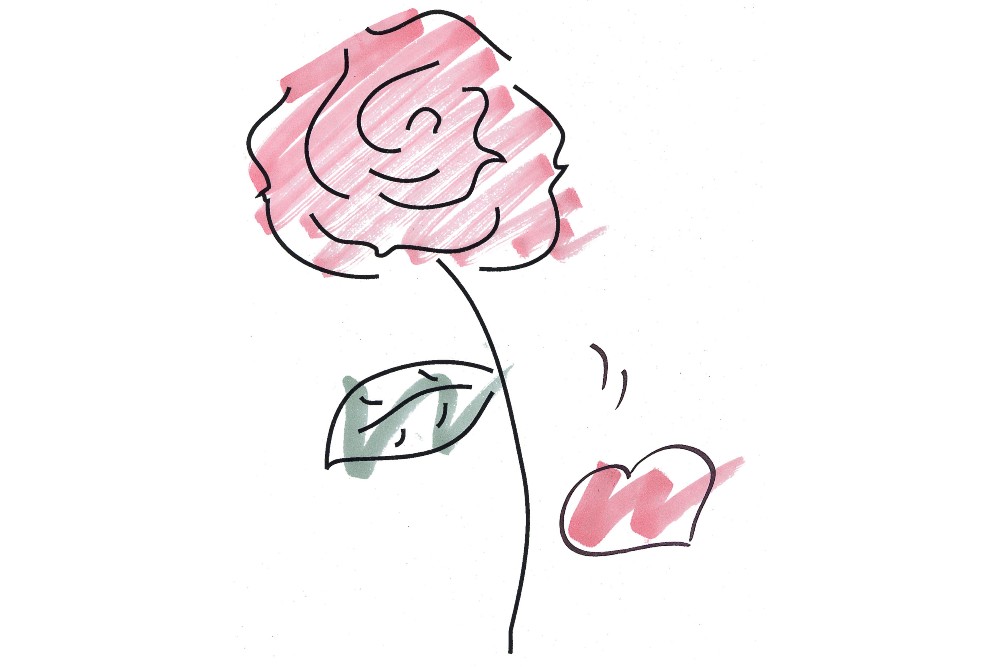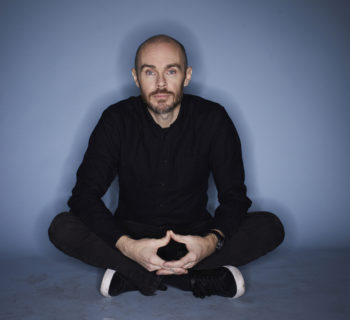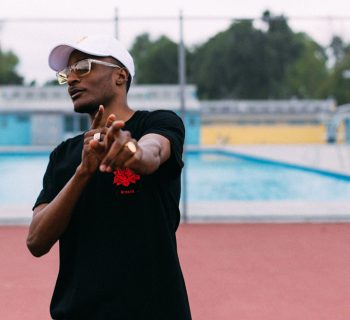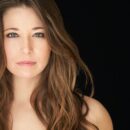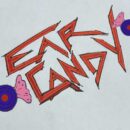Singer, songwriter, actress and author Marianne Faithfull passed away on January 30th.
On April 4, 2020 Hollywood Reporter story Alex Ritman reported the news “McQueen Director to Helm Marianne Faithfull Biopic With Bohemian Rhapsody StarLucy Boynton.”
Ian Bonhôte who helmed the acclaimed Alexander McQueen documentary McQueen, is now slated to direct the biopic Faithfull, starring actress Lucy Boynton confirmedfor the lead role. Julia Taylor-Stanley (Coriolanus) of Artemis Films and Colin Vaines (Film Stars Don't Die in Liverpool) of Synchronistic Pictures producing.
According to The Hollywood Reporter, the movie will depict “the star's roller-coaster journey from being discovered as a convent schoolgirl of 17, finding fame as a pop idol, living through hedonistic times and a tumultuous romance with Mick Jagger that inspired some of their greatest songs, to being a homeless drug addict in Soho.”
“I am delighted that my story is finally being made with my dream team of Lucy, Julia and Ian,” said Faithfull in a statement.
In my few encounters with Marianne over the decades, and long interview in Hollywood at the Chateau Marmont hotel in 1995, we always discussed beat generation poets and counter-culture figures, and I’m so glad she delivered this long-awaited poetry collection.
Her 1994 Faithfull: An Autobiography, written with David Dalton, and hopefully this upcoming biopic will depict a real-to-reel survivor’s tale.
Marianne’s catalog includes 20 albums in her career. A 2018 effort on BMG, Negative Capability, hascollaborations with Keith Richards and Nick Cave.
Earlier this century ABKCO Records issued a collection of Faithfull’s songs of the ‘60’s, Marianne Faithfull’s Greatest Hits, spotlighting “As Tears Go By,” “Summer Nights,” “Come Stay With Me,” “This Little Bird,” and “Sister Morphine,” which she co-wrote with Mick Jagger and Keith Richards.
In 2000 I discussed Faithfull with her first record producer Andrew Loog Oldham, the 1963-1967 record producer and manager of the Rolling Stones, for Discoveries magazine.
“The fact is forgotten that Marianne had, between August of ‘64 and the summer of ‘65 four Top Ten hits in the UK. ‘As Tears Go By’ and ‘Come And Stay With Me’ held up.”
“As Tears Go By” is a song penned by Mick Jagger, Keith Richards and Andrew Loog Oldham. It reached a top ten position in the UK singles chart. The Stones then recorded their own version, included on the American pressing of December’s Children (And Everybody’s) in 1965. Their American record label London issued “As Tears Go By” as a single that landed in the number six spot on the Billboard Hot 100 singles chart. The Rolling Stones subsequently performed the tune on an episode of The Ed Sullivan Show.
In 2016 author and deejay Oldham further elaborated about the 1963-1966 music business in England.
“For one it was obvious that ‘this thing of ours’ was not going to disappear. We had come in following the Twist, Davy Crockett, Skiffle, and Trad Jazz. Skiffle and Trad Jazz had been very important; they had been the BBC and the Establishments last chance to control the key to what music we got to hear.
“There were villains, there was mayhem, action and if we had not had Pirate Radio I might not have had a hit with Marianne Faithfull's ‘As Tears Go By.’ The BBC would not touch it. They said Marianne could not sing.
“Mind you, that's what they'd said about Mick Jagger a year earlier when the Rolling Stones failed their BBC live audition. They said ‘The singer cannot sing.’ The BBC was the enemy, a limp wristed arm of the government trying to keep kids on a rationed musical diet of trad jazz and skiffle.”
In the 2012 Rolling Stones documentary, Crossfire Hurricane, directed by Brett Morgen, produced by Mick Jagger, Victoria Pearman, Keith Richards and Charlie Watts, Jagger acknowledged his influence for the composition was informed from French poet Pierre Baudelaire and the Russian author Mikhail Bulgakov’s novel The Master and Margarita. An English translation was made available in 1967.
It was Marianne Faithfull, who gave Mick the book which inspired “Sympathy for the Devil.”
It’s heard on Beggar’s Banquet, produced by Jimmy Miller and engineered by Glyn Johns and Eddie Kramer in London at Olympic Sound Studios. “Sympathy for the Devil” started on June 4, 1968 and continued the next day. Overdubs were added during June 8th-10th.
Session personal for those dates were: Mick Jagger, lead vocals; Keith Richards; bass guitar, lead guitar, backing vocals; Bill Wyman, maracas and background vocals; Brian Jones, acoustic guitar and background vocals; Charlie Watts, drums, cowbell and backing vocals; Rocky Dzidzornu, congas; Nicky Hopkins, piano and backing vocals, Anita Pallenberg and Marianne Faithfull, backing vocals.
In 2018 ABKCO issued The Rolling Stones Rock and Roll Circus on DVD, a landmark 1968 event directed by Michael Lindsay-Hogg just prior to directing the Beatles Let It Be.
One of the highlights is Marianne Faithfull singing “Something Better,” a Barry Mann and Gerry Goffin tune, arranged by Jack Nitzsche and produced by Mick Jagger. Charlie Watts introduces Faithfull on screen.
In a 2019 interview I asked Michael Lindsay-Hogg about Marianne’s sequence in the film and his sweeping directorial pan displayed.
“It goes back to the song,” he stated. “It goes back to Marianne and the years when she and Mick were going out together. She was a beautiful girl with a lovely figure. And she was the only girl except for Yoko Ono.
“Marianne appeared and I thought ‘this has to be about her and the camera work,’ a one of a kind beauty. And the way Tony Richmond lit her with her hair on her face. She was a beautiful young woman. It was partly celebrating her. And, then there is that long musical break where the camera circles around and ‘what would we cut away too?’ And so I thought ‘let’s do the unusual thing of just holding on her when she is not singing. Just move the camera around.
“I also wanted contrast with her because there were a lot of men on the show. Everyone on the show, except for Yoko, were guys. At the time there weren’t a lot of women in the rock ‘n’ roll world yet. There was wonderful Dusty Springfield, but mainly guys.”
In the early ’90s she was made a professor by Allen Ginsberg at the Naropa Poetry Institute in Colorado, where she has taught lyric writing. Her certificate reads: Marianne Faithfull, Professor Of Poetics, Jack Kerouac School Of Disembodied Poets.
During 1994, Marianne Faithfull had a new album out, A Secret Life, a collaboration with producer/arranger /co-writer Angelo Badalamenti, (best known for his working relationship with filmmaker David Lynch, including orchestrating the music for Twin Peaks).
Island Records at the time also released Faithfull: A Collection Of Her Best Recordings, and in 1994, Little Brown published her candid terrific memoir, with David Dalton, Faithfull: An Autobiography.
It was Allen Ginsberg, who encouraged me to look Marianne Faithfull up the next time she was in Hollywood.
Q: I got from your autobiography you were a poetry head.
A. Always. That’s one of the reasons I love Allen so much and William Burroughs.
Q. Needless to say, one of the things that drew you to the music and word work of Bob Dylan. I noticed you were in one of the hotel room scenes in Dylan’s Dont Look Back film that chronicled his 1965 British tour.
In your book in the Dylan Redux chapter, you provide a real cool glimpse of Dylan in action in the mid-60’s and then years later. I thought it was one of the sections where you and David Dalton worked really hard in bringing the moment to the reader.
A. I think that was the bit that David did best. I didn’t work the hardest on that, David did. But it was wonderful. I wish he’d written the whole book like that. And all the Bobby Newirth stuff was so beautiful.
Q. Had you never seen a rock person like Dylan or an American like him in 1965?
A. Never. Never in my wildest dreams could have imagined anyone like Bob in 1965. His brain, but I was frightened. I didn’t know they were probably more scared of me. I don’t know. They were all on methedrine. He played me the album Bringing It All Back Home himself on his own. It was just amazing. And I worshipped him anyway. That was where I got very close to Allen Ginsberg ‘cause Allen was the only sort of person I could recognize as being somewhat like me.
Q. I really enjoyed the passage in your book when Allen came to London with the Italian poet Giuseppe Ungaretti. They read at Queen Elizabeth Hall. You had spent some time with Ginsberg during Dylan’s Dont Look Back tour and I laughed out loud as you described inviting Allen to the house you shared with Mick Jagger. Great image and a very fortunate position for you as Ginsberg sat on your bed with you and Mick naked under a fur cover.
As you put it, “Allen, as usual, was on a mission. Allen was trying to get Mick to put William Blake’s ‘The Grey Monk’ to music.” Again, until this book, I never knew you had such a jones for poetry, and beat generation poets.
A. (Smiles). I find them very sexy all those guys. Wonderful. I teased Allen in my book. I adore him. The first time I went to Naropa, Allen was literally by my side like he is. There was a lot of criticism and “Who is the woman?” “Why do you (Allen) think she can do this?” And he didn’t say anything. “I just do.” And then I came back again. We are very good friends. He also represents a lot of things for me that aren’t part of our friendship or our relationship. He is the greatest living American poet. I hooked Allen up with [producer] Hal Willner.
Q. How did your autobiography come together? I know you’ve been approached over the years and obviously film adaptations are being offered on this book and your life.
A. It took a long time. I have great recall.
Q. Why did you do the book?
A. I did it for you. (laughs). I did. I felt there was something in the story that was very common to everybody. I do believe that the details and the individuals are different, but the emotions and the sort of core thing are very, very connected to all human experience. Therefore, I felt it was a valid story to tell. And then again, I felt I was very close to some of the greatest people of my time. And I had a lot of help.
David Dalton came to Ireland for two weeks. He’s a very shy person. He selected me. Such a strange story. Tony Secunda, who recently died, I dedicated my paperback English edition to him, he had become a literary agent, and he was working with Dalton and he came to Ireland. I didn’t want to do this book, really. Much as I care for humanity…
Q. And he picked David Dalton who was a big Rolling Stones fan.
A. That was peculiar for me. And my great tease. I would tell David at first, that what I saw in him as a writer was that he was basically a necrophilliac. “You have only written books about dead people. (James Dean, Janis Joplin, Jim Morrison). How are you going to cope with someone who is not dead and not likely to be dead?”
Q. And being a woman with opinions.
A. But David liked that.
Q. But I’m sure you also gave a view and observations of your life and art process that were different than the myth and history events captured so far in the Rolling Stones documentation.
A. It took him a long time to believe me. I have to stand up for David because it wasn’t as simple as that. Yes, he was a Rolling Stones fan, but that in itself shouldn’t be a problem.
The interviews went on for hours.
Q. And for once, you had the opportunity and forum to tell your side of the story. The truth you saw and experienced. You were in control.
A. Well I didn’t realize that, ya know. That’s what made it so hard for Dalton. He kept saying to me, “This is your book! This is your thing! I will only do what you want.” But I didn’t believe him.
Q. Was it your intent in the book, and specifically this Dylan chapter to be so detail oriented about the environment? Obviously, you were doing a memoir. I know for a fact there are some scenes that went down that you could not invent unless you were there. And, I even feel it on the printed page.
A. Of course, I was there! I ended up adoring David. He’s one of my best friends now.
Q. Did photos trigger recall of events?
A. No. I‘ve been carrying this around for a long time. And I had remembered the things that were important to me which were always the same. It was always very, very clear that what I was really interested in and always had been interested in was motive and psychic position and why. There were a million things I could not remember, which are not interesting to me.
Q. What was it like seeing the galleys? The first typeset manuscript?
A. That was heavy. (sighs). That was when I also saw the pictures. My editor came over with the pictures. That was one of the harder bits.
Q. Did you take things out at that point?
A. Yes. It wasn’t legalities. There were some mistakes and I could not have them.
Q. Was it hard during the interviews and the collaboration with David Dalton to tell your point of view? I would imagine you had to at times be combative.
A. Yes. I thought it was really good for me and about fuckin’ time I learned to do that. I didn’t want to. I resisted it but I had to. I had to. David is married to a very intelligent woman Coco and she really worked very closely with him and I think it had some impact. It was much harder work than David had ever done before. A living person.
Q: In your book you mention some of the Rolling Stones characters in their songs came to life partially owing to acid.
A: Of course they did. I don’t think acid is relative or relevant anymore. I wouldn’t do it again. But I think that it was important then, and I think it taught us a lot.
They were all very much in love with me at that time. Not only me, but I was one of the many women they were in love with. Keith and I are still very close. I’m under his wing and I know I will always be under his wing.
Brian wasn’t as bad as everybody thinks. Well Brian was a genius but he was a very irritating person. Keith really loved Brian. I use Brian. I have a whole lot of friends on the other side that I call up when I need them. I use Brian, Janis and now I’ve got Tony Secunda and Denny Cordell.
I cut out some things about Brian Jones. He went on and on and made him much more of a worse person than he was. He could only do that really because he was dead. He couldn’t go on and on about Keith and Anita or even me because I did the classic Buddhist thing: I just did a drive all blames into one. I made that decision. That is something I learned from Allen. I’ve had good Naropa training. The galleys were hard to read.
Q. What is it like looking and reading the book?
A. I’ve read it and re-read it and it’s still hard…It’s hard to believe I’ve done it and that it’s really me and a part of me now. David did a good job, man. I have to say this.
Q. Your book is now out in paperback. I just got a copy. Do you have any more feelings on it since publication?
A. I’m terribly pleased with it and proud of it. It’s like a child of mine that has gone out and done well. It’s a good read.
Harvey Kubernik is the author of 20 books, including 2009’s Canyon Of Dreams: The Magic And The Music Of Laurel Canyon, 2014’s Turn Up The Radio! Rock, Pop and Roll In Los Angeles 1956-1972, 2015's Every Body Knows: Leonard Cohen, 2016's Heart of Gold Neil Young and 2017's 1967: A Complete Rock Music History of the Summer of Love.
Sterling/Barnes and Noble in 2018 published Harvey and Kenneth Kubernik’s The Story Of The Band: From Big Pink To The Last Waltz. In2021 the duo wrote Jimi Hendrix: Voodoo Child for Sterling/Barnes and Noble.
Otherworld Cottage Industries in 2020 published Harvey’s Docs That Rock, Music That Matters. His book Screen Gems: (Pop Music Documentaries and Rock ‘n’ Roll Television Moments) is scheduledfor 2025 publication.
During 2006 Harvey spoke at the special hearings by The Library of Congress held in Hollywood, California, discussing archiving practices and audiotape preservation. In 2017 Kubernik appeared at the Rock and Roll Hall of Fame in Cleveland, Ohio, in their Distinguished Speakers Series.

